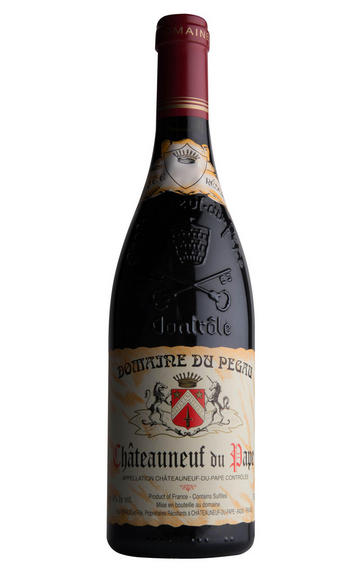
2007 Châteauneuf-du-Pape, Cuvée Da Capo, Domaine du Pegau, Rhône
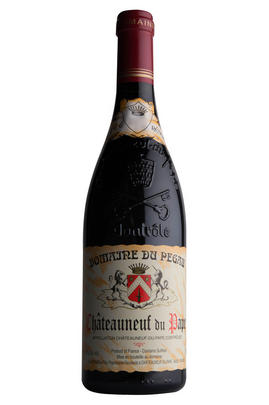
Critics reviews
Jeb Dunnuck - 01/03/2017
An inky/purple color is followed by aromas of smoked meats, Peking duck, licorice, lavender, aged beef, grilled steak blood, black currants, plums, sauteed cepes and soy. Enormously concentrated, broad, expansive and massive but not over the top, this is a tour de force in winemaking that is impossible to imagine unless one has a bottle to work through over the course of 4 to 5 hours. Although they advertise using all 13 authorized varietals, this wine is over 90% Grenache, largely from the famed La Crau section of Chateauneuf du Pape. They do have other vineyards from which they pull some of the fruit that goes into the Cuvee da Capo, including St.-Jean, Esquilons and occasionally Monpertuis. The 2007 seems to be broader, fatter, more unctuously textured and more flattering to drink at this stage than the 1998 was. In that sense, the evolutionary development may resemble their 2003s. The 2007 was bottled in February, 2010, and my anticipated drinking dates are 2014-2030+.
(Robert Parker - Wine Advocate - October 2010)
About this WINE
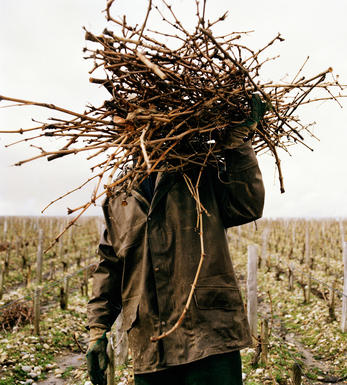
Domaine de Pegau
The Feraud family of Domaine du Pegau, including daughter Laurence and the father Paul, are fervent proponents of the most traditional wine-making style of Provence and Rhone. It is widely regarded as one of the leading producers in Châteauneuf-du-Pape. The property in Châteauneuf is made up of eleven separate vineyard parcels spread throughout the Courthézon,La Solitude and Bédarrides sector of the appellation.
The Châteauneuf red (a small quantity of white is also produced) is a blend of 75% Grenache, 20% Syrah, with the remaining 5% being made up of Mourvèdre, Counoise and other varieties. The grapes are hand harvested and are then fermented without being de-stemmed. The cuvaison lasts for 12-15 days and the wine is then aged for around 18 months in old oak foudres. No fining or filtration is carried out. The Cuvée Laurence is the same wine as the Cuvée Réservée but is kept in wooden cask for another 18-24 months before being bottled. These are rich, robust and concentrated wines, which tend to show at their best with 7-8 years of bottle age.
Pegau’s expanding wine production comprises the estate in Chateauneuf du Pape (approximately 47 acres) a vin de pays, a vin de table, a negociant label (Laurence Feraud, mostly Cotes du Rhones) and a second negociant line-up sold under the moniker Feraud-Brunel, which Laurence oversees along with Andre Brunel. Chateauneuf du Pape Cuvee da Capo is produced from the appellation’s well-known sector known as La Crau.
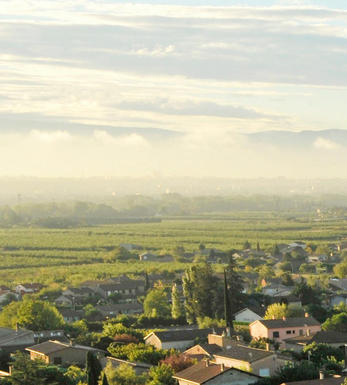
Châteauneuf-du-Pape
The most celebrated village of the Southern Rhône, Châteauneuf-du-Pape is the birthplace of the now indispensable French Appellation d’Origine Contrôlée system – imperfect though it may be. Compared to the Northern Rhône, the vineyards here are relatively flat and often feature the iconic galet pebbles – the precise benefits of which are a source of much debate. Minimum alcohol levels required by the AOC are the highest in France, but at 12.5% it is well below the natural generosity of Grenache, which only achieves its full aromatic potential when it is fully ripe and laden with the resultant high sugars. Syrah and Mourvèdre contribute the other defining elements in the blend, adding pepper, savoury spice and structure to the decadent Grenache. There are a further 10 permitted red grape varieties which can be used to adjust the “seasoning”. Of the five white varieties permitted, it is Grenache Noir’s sibling – predictably perhaps – Grenache Blanc, which dominates, though Roussanne shows a great deal of promise when handled well, notably at Château de Beaucastel.
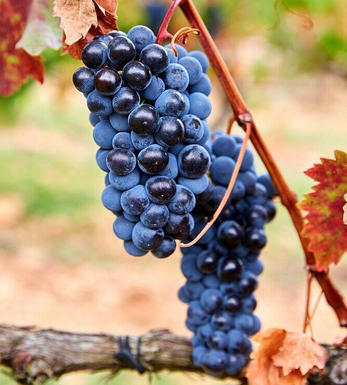
Southern Rhône Blend
The vast majority of wines from the Southern Rhône are blends. There are 5 main black varieties, although others are used and the most famous wine of the region, Châteauneuf du Pape, can be made from as many as 13 different varieties. Grenache is the most important grape in the southern Rhône - it contributes alcohol, warmth and gentle juicy fruit and is an ideal base wine in the blend. Plantings of Syrah in the southern Rhône have risen dramatically in the last decade and it is an increasingly important component in blends. It rarely attains the heights that it does in the North but adds colour, backbone, tannins and soft ripe fruit to the blend.
The much-maligned Carignan has been on the retreat recently but is still included in many blends - the best old vines can add colour, body and spicy fruits. Cinsault is also backtracking but, if yields are restricted, can produce moderately well-coloured wines adding pleasant-light fruit to red and rosé blends. Finally, Mourvèdre, a grape from Bandol on the Mediterranean coast, has recently become an increasingly significant component of Southern Rhône blends - it often struggles to ripen fully but can add acidity, ripe spicy berry fruits and hints of tobacco to blends.


Buying options
Add to wishlist
Description
A deeper, richer version of the Cuvee Reservee, the 2007 Chateauneuf du Pape Cuvee da Capo is one of the more youthful, concentrated wines of the vintage. Coming primarily from the la Crau lieu-dit and over 90% Grenache, aged in an old foudre, its deep ruby color is followed by a bonafide smorgasbord of Provencal aromas and flavors of garrigue, cured meats, incense, beef blood, black currants and pepper. While a full-bodied, incredibly concentrated, rich and unctuous wine, it carries its wealth of fruit and mid-palate density with incredible elegance and purity, with a seamless texture, no hard edges and a finish that won't quit. The 2007 is more elegant and seamless than both the 1998 and 2003, with an incredible sweetness of tannin. Nevertheless, it still needs another 2-4 years of bottle age and will blow your mind over the following 10-15 years.
Jeb Dunnuck - 01/03/2017
wine at a glance
Delivery and quality guarantee